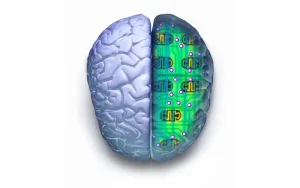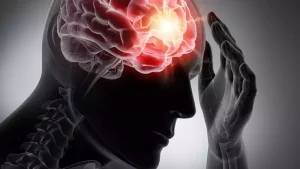Situational depression and clinical depression may seem similar, but they hold distinct differences. Although both showcase intense emotional distress, feelings of hopelessness, and disrupted sleep patterns, clinical depression presents itself in a more severe manner. In essence, it takes the form of what is recognized as major depressive disorder. Truly, the psychological fatigue endured by those with clinical depression is profound.
Nevertheless, every individual diagnosed with major depression will have previously encountered a situational depressive episode. And if they lack effective coping mechanisms to confront life’s stressors, this can lead to considerably more intense conditions.
Distinguishing Situational Depression from Clinical Depression
The primary distinction between situational depression and clinical depression lies in their origins. Situational depression arises as a direct reaction to a specific negative event, such as the loss of a loved one, which serves as a prevalent illustration. It’s essential to recognize that all of us, at certain junctures, may encounter this sort of unanticipated emotional distress.
Life can be challenging, and unexpected challenges or twists of fate can swiftly lead us into states of significant emotional fragility. It is during these moments that the foundations of milder forms of depression can take shape. If left unattended, these foundations can evolve into a more pronounced clinical manifestation. Hence, understanding the distinctions between situational depression and clinical depression becomes crucial. These distinctions are outlined below:
1-Catalysts: Situational Depression Arises from Evident Triggers
Upon reflection, many of us can acknowledge encounters with particularly challenging periods. Some among us may have managed these encounters capably, while others may have found them considerably more daunting. Situational depression emerges subsequent to a distressing or markedly stressful occurrence, leading to an understandably distressed state.
Psychologists term this aspect as “adjustment disorder,” as it emerges in response to a discernible and identifiable psychosocial stress factor. These are instances of exceptionally taxing and unforeseen events that surpass an individual’s available psychological coping mechanisms. A study carried out by the University of Melbourne (Australia) outlined the subsequent triggers for adjustment disorder:
- Job loss.
- Conflicts within relationships.
- Loss of a loved one.
- Financial difficulties.
- Witnessing a violent incident.
- Facing a direct threat to one’s life.
- Coping with highly stressful, though non-traumatic, situations.
- Confronting an illness, whether personal or affecting someone incredibly close.
In contrast, when considering clinical depression, pinpointing a precise origin isn’t straightforward. Rather, it arises from a culmination of numerous accumulated stress-inducing events and unaddressed suffering. A publication in Neuroscience Bulletin further posits the involvement of biological and neurobiological factors.
2-Intensity: Clinical Depression Emanates as Major Depressive Disorder
If situational depression (adjustment disorder) remains unaddressed for an extended period—typically spanning three to six months—it can evolve into clinical depression. In such instances, the levels of emotional, psychological, and behavioral depletion become markedly profound. Additionally, the affected individual encounters considerable difficulty in executing their routine activities.
For a clearer comprehension of the distinctions between situational depression and clinical depression, let’s delve into their respective manifestations.
Situational Depression
- Feelings of unease.
- Tendency to tear up.
- Disrupted sleep patterns.
- Persistent apprehension.
- Desire for solitude.
- Shifts in eating habits.
- Challenges in decision-making.
- Sensation of being engulfed by circumstances.
- Emotional turmoil when confronting an overpowering situation.
- A transient state that typically resolves within one to three months.
- A fusion of sadness and despair intertwined with edginess.
Clinical depression or major depression
- Tendency toward tears.
- Absence of vitality.
- Continuous sense of despair.
- Increased irritability and negative temperament.
- Muscle and joint discomfort.
- Changes in eating, sleeping, and digestive behaviors.
- Cognitive challenges, such as diminished focus and memory lapses.
- Emotional indifference and difficulty experiencing joy (anhedonia).
- Unexplained overall discomfort.
- Contemplation of suicide. This reality is supported by a publication in Frontiers in Psychiatry, underscoring the importance of early clinical depression recognition.
3-Remedies for Situational Depression and Clinical Depression
One of the primary distinctions between situational depression and clinical depression lies in the fact that the former has the potential to resolve itself without the need for professional intervention. After all, encountering stressful life events is a common occurrence, and it’s natural to develop adjustment disorder as a response to such circumstances. We all grapple with the challenges of assimilating unexpected shifts in our circumstances.
Nevertheless, individuals who are more emotionally susceptible and possess fewer coping mechanisms are at risk of progressing toward major depression. This, in fact, serves as the crucial aspect that can’t be disregarded. If a person feels unequipped to navigate a distressing event, seeking specialized assistance is advisable. Let’s explore the most suitable treatment approaches for these two distinct forms of depression.
Treating Situational Depression
- Situational depression often doesn’t necessarily mandate therapeutic or pharmacological interventions. In many instances, the individual can effectively navigate this period of distress by allowing themselves to experience the pain and acknowledging their emotions.
- According to a study conducted by Hannover Medical School (Germany), metacognitive therapy is deemed effective for individuals with adjustment disorder. This approach is concise and focuses on addressing unproductive thought patterns. Additionally, the following strategies can also be beneficial:
- Building social connections.
- Incorporating yoga and mindfulness practices.
- Exploring new hobbies.
- Ensuring sufficient rest.
- Employing stress management techniques.
- Embracing emotional regulation methods.
- Cultivating robust psychosocial support.
- Engaging in fresh projects and personal aspirations.
- Recognizing that the anguish is transient and will eventually subside.
Managing Clinical Depression
- Psychosocial assistance.
- Behavioral engagement.
- Self-care methodologies.
- Cognitive-behavioral therapy.
- Medication-based treatment.
- Acceptance and commitment therapy.
Vulnerability Factors
Having gained an understanding of the distinctions between situational depression and clinical depression, you might be curious about the elements that propel an individual from experiencing adjustment disorder to developing major depression.
Indeed, the demarcation between these two realms can be quite delicate. As a result, there exist nuanced factors that warrant consideration, both to preempt the progression of the condition and to undertake appropriate measures.
Individuals who have experienced a challenging and adverse childhood face an elevated likelihood of encountering clinical depression or major depression. Such a background renders them susceptible to becoming overwhelmed by any subsequent stressful event, often hindering their capacity to manage it effectively. Indeed, an article featured in Frontiers in Psychology posits that tumultuous childhood experiences contribute to risk.
Additional factors of susceptibility include:
- Absence of a robust support network.
- An entrenched, rigid, and pessimistic mental outlook.
- Struggles in regulating stress and anxiety.
- Displaying traits of a neurotic personality or emotional instability.
- Coping with other psychological conditions, such as bipolar disorder or borderline personality disorder, among others.










